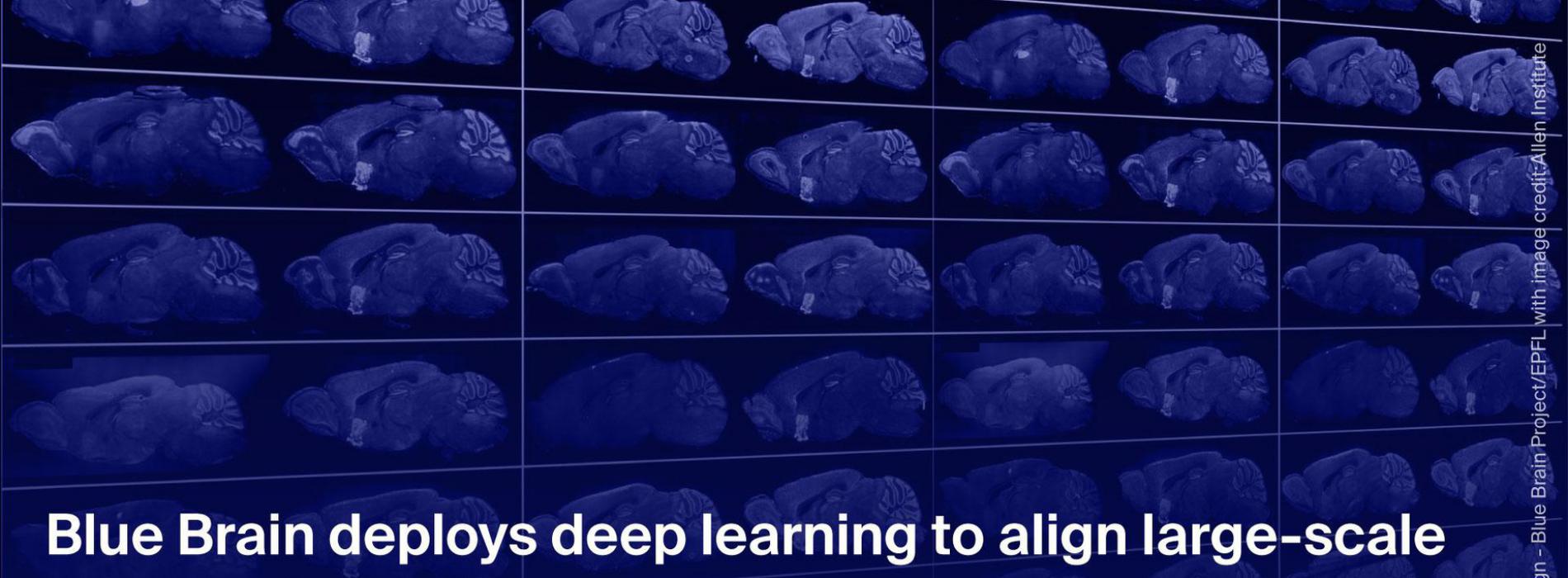
 News
News
Blue Brain uses deep learning to align complex brain datasets
© 2021 EPFL
Atlases of the brain are an essential tool for neuroscientific research as they make it possible to see diverse and multimodal data in the same reference frame. This is particularly the case for the EPFL Blue Brain Project where our work requires the acquisition and integration of high quality maps of data of the rodent brain. As those data sets are acquired from different animals, the integration thereof requires a registration step, i.e. bringing individual datasets in spatial overlap.
Blue Brain’s Machine Learning team has developed dedicated open source tools to enable both our and other scientists to align large-scale complex brain datasets, specifically spatial gene expression data of the rodent brain with a reference atlas. While computer-aided alignment software exists, accurate alignments typically require numerous manual corrections by the human expert - a process that is very time-consuming, non-reproducible, and cannot scale to the rapidly growing data of spatial gene expression. The approach followed by Blue Brain uses machine learning to automate this registration process and doing away with the need for corrections by the human expert. It was tested on data from the Allen Mouse Brain Atlas from the Allen Institute for Brain Science, hosting a rich database of gene expression images, Nissl volumes, and reference atlases. Our results show an acceleration and improvement in accuracy over previous methods. To read the whole news, please visit the following web-site.